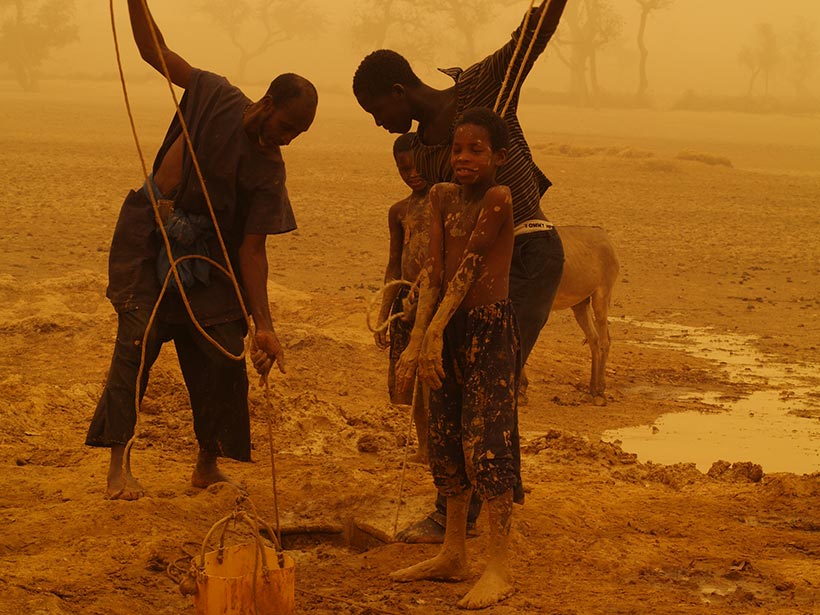To mark Earth Day, leaders from more than 165 countries are expected to gather at the United Nations tomorrow for a ceremony to sign the Paris climate agreement, reached last December. Under the historic deal, each country has set targets to reduce greenhouse gas emissions, with the ultimate goal to keep the rise in global temperatures below 2°C above the preindustrial average.
However, new research suggests that the emissions caps might not be low enough to prevent damaging impacts for parts of the world that are vulnerable to climate change. A study presented today at the 2016 European Geosciences Union (EGU) meeting in Vienna, Austria, shows big differences between a 2°C warmer world and a 1.5°C warmer world.
A 2°C temperature increase by 2100 would mean that all coral reef ecosystems in tropical regions would be at risk of degradation due to coral bleaching.
The study, also published today in Earth System Dynamics, shows that tropical regions would be especially hard hit by a 2°C temperature increase. Warm spells would last up to 50% longer, resulting in corn and wheat yields half what they would be under a 1.5°C increase, the researchers found. What’s more, a 2°C temperature increase by 2100 would also mean that all coral reef ecosystems in tropical regions would be at risk of degradation due to coral bleaching, according to the study led by Carl Schleussner of Climate Analytics in Germany.
Greater Reductions Needed
To limit temperature increases to just 1.5°C, countries may need to strengthen their emission reduction pledges significantly. Even if the current Paris commitments are met and extended beyond 2030, global temperatures are on track to rise 3°C above the preindustrial average, said Massachusetts Institute of Technology climate scientist Erwan Monier.
He collaborated in another study, also presented at the EGU meeting this week, that combined a human activity model with a climate model to look at five different global warming scenarios through 2100. His team found that there is only a 5% probability that the Paris agreement will keep global temperatures below 2°C, even with the most optimistic outlook.
Nonetheless, Monier told Eos that it is still possible to limit temperatures to 2°C by the end of the century. However, that would require major changes in policy. “We’re not on that path right now, but it’s totally achievable,” he said. “I think most people know some policy tools that would get us there, like a carbon tax. But there’s unwillingness to actually use those.”
Possible 2.7°C Rise Scrutinized
Other researchers have focused on tipping points for severe climate impacts that may lie beyond 2°C. Climate scientist Robert DeConto of the University of Massachusetts Amherst published a paper in Nature last month that found that the Antarctic ice sheet would barely contribute to sea level rise if the average global temperature rise stayed below 2°C. Since writing that paper, DeConto has applied his same model to a temperature increase of 2.7°C. At a press conference at the EGU meeting today, DeConto explained that his preliminary results suggest that the Antarctic ice sheet would contribute about 80 centimeters of potential sea level rise in a 2.7°C warmer world. DeConto chose to scrutinize the effects of a 2.7°C increase because the Climate Action Tracker had warned ahead of the Paris agreement that the world is headed for that level of warming by 2100 even if governments fully implement their climate action pledges.
Glacier Loss Will Continue Under Cuts
Even a modest 1.5°C increase would still result in about half of glaciers melting.
Another study finds that regardless of the success of the Paris agreement, some damaging aspects of climate change can’t be stopped. Glacier melt will continue to accelerate, explained Ben Marzeion, a climate scientist at the University of Bremen in Germany. He presented his results during an earlier session at the EGU meeting. If it were scientifically possible for global warming to stop today, glaciers would still lose 30% of their mass. Even a modest 1.5°C increase, according to Marzeion, would still result in about half of glaciers melting.
—Megan Gannon, Freelance Writer; email: [email protected]
Citation: Gannon, M. (2016), New climate studies: Worse risks at 2° rise, higher rise likely, Eos, 97, doi:10.1029/2016EO051095. Published on 21 April 2016.
Text © 2016. The authors. CC BY-NC-ND 3.0
Except where otherwise noted, images are subject to copyright. Any reuse without express permission from the copyright owner is prohibited.

